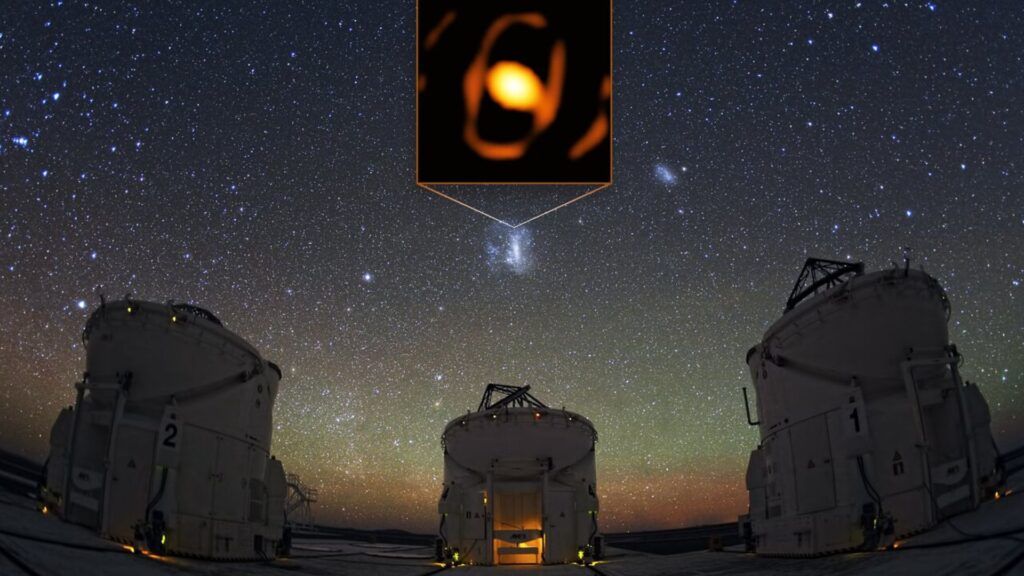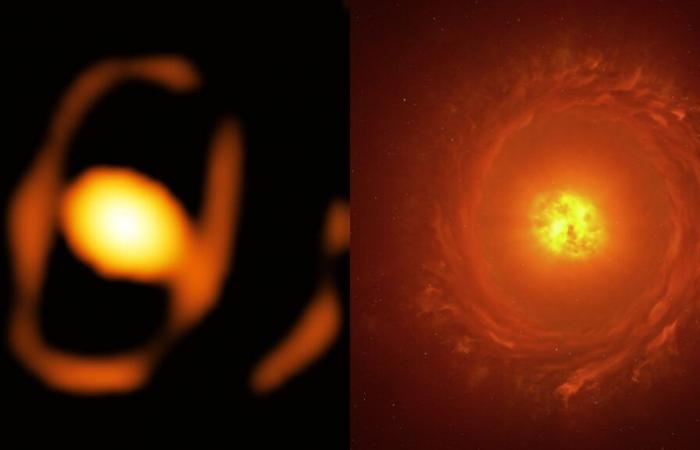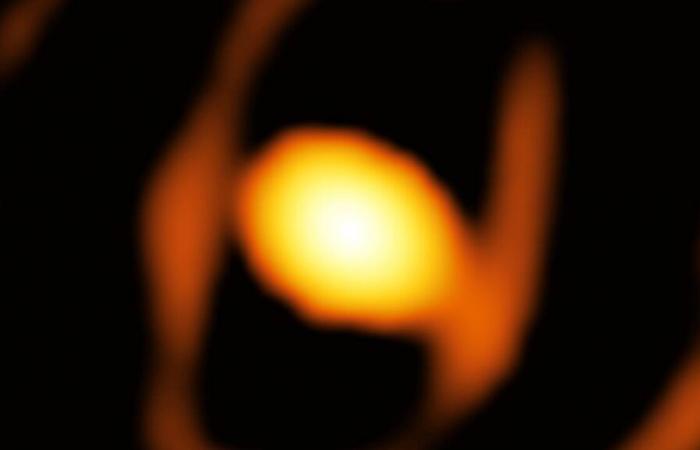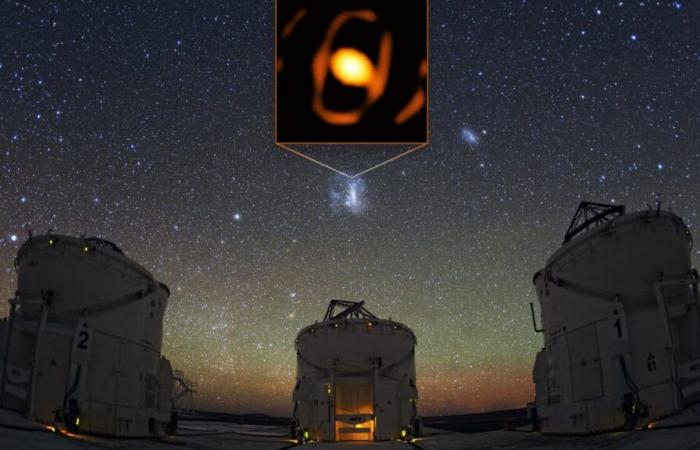In a study published on November 21, 2024, a team of researchers succeeded, for the first time, in taking a close-up photo of a star located outside our galaxy. Admiring WOH G64, as it goes by its nickname, is exceptional: here’s why.
Keiichi Ohnaka, an astrophysicist at Andrés Bello University in Chile, and his team succeeded, for the first time, in capturing “an image of a dying star in a galaxy outside our Milky Way » thanks to the VLTI, the Very Large Telescope Interferometer of the European Southern Observatory (ESO). Their study is published this November 21, 2024 in the journal Astronomy and Astrophysics. This is the first “close-up” image obtained of a star located outside our galaxy.
The star, named WOH G64, is located 160,000 light years from Earth and is found in the Large Magellanic Cloud, a small satellite galaxy of the Milky Way. WOH G64 is about 2,000 times the size of our sun and is listed as a red supergiant.
The WOH G64 star is not unknown
This is not the first time this star has been studied. Already, between 2005 and 2007, Ohnaka and his team carried out a study with the help of the VLTI. His goal? Get more information about the star’s characteristics. However, the team did not succeed, at the time, in acquiring a good image of it.
Today, it is thanks to advances in observation tools that researchers have been able to photograph WOH G64. They thus noted that, visually, the star was darker than ten years ago. This phenomenon would be linked to the end of life of the red supergiant: it expels gas and dust from its outer layers. This can last several thousand years and would also be responsible, according to scientists, for the particular shape of the dust cloud that surrounds it.
« We found that the star has undergone a significant change over the past ten years, giving us a rare opportunity to witness the life of a star in real time », Comments Gerd Weigelt, co-author of the forthcoming study, in the ESO press release. The shape of this cloud could also be due to the presence of another star nearby, which has not yet been discovered.


The inaccessible star outside the Milky Way
During its decline, WOH G64 will continue to lose its light and will be even more difficult to observe. But this is probably without taking into account future advances in technology and, in particular, planned updates to the ESO VLTI which will make it even more efficient. Thus should continue the quest of researchers to reach the inaccessible star.
Find all our news that concerns a galaxy








